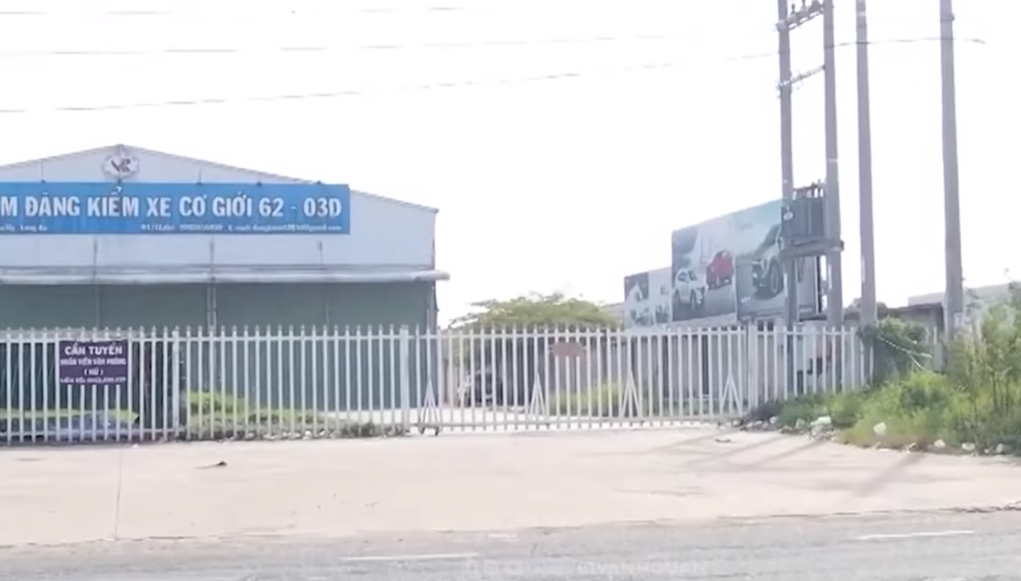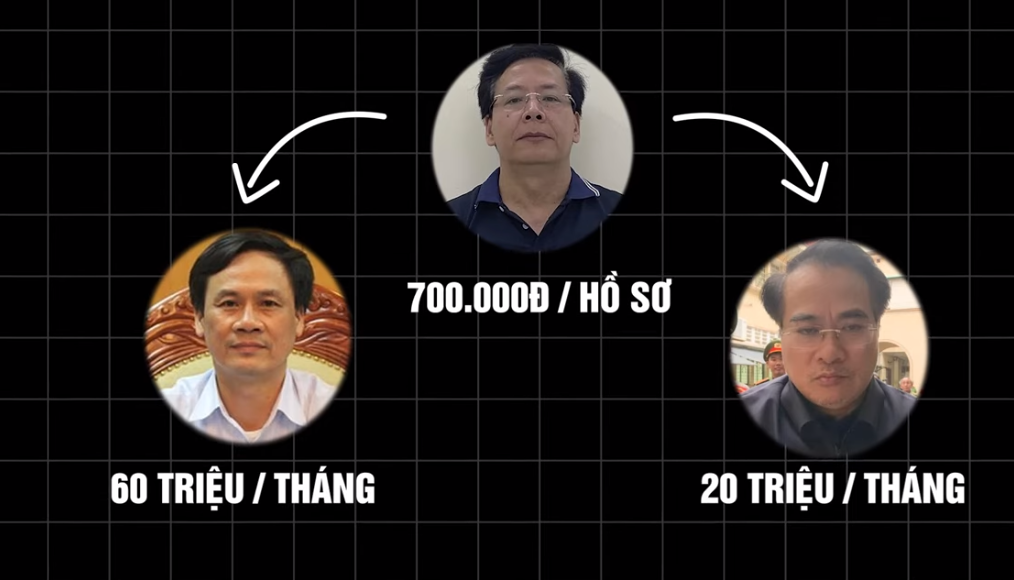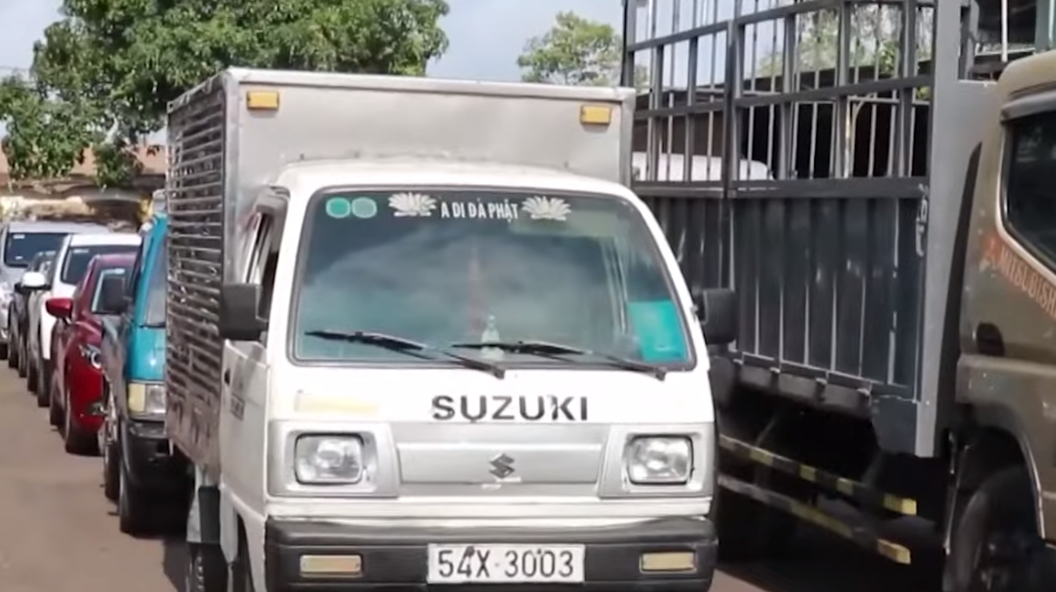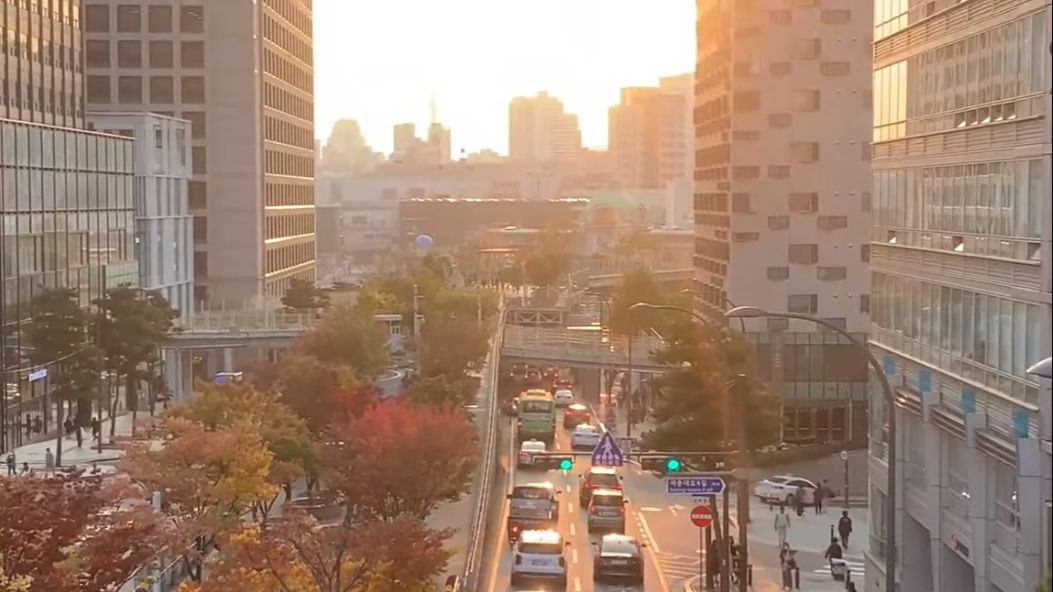What is vehicle inspection?
It means that the authorized agency will inspect your vehicle inside out from a to z to see if it meets the standards, if there are any areas that need to be repaired to ensure safety for yourself and other road users. Because this car is also old, you know for sure If it's not broken here, it's broken there, and you're afraid you won't pass the inspection, meaning your vehicle is not allowed to circulate, not allowed to wait for passengers, not able to make money. When you're stuck, you have an older brother who tells you to do this and that, the car will pass the inspection and get through.
Regardless, one day you may find yourself at the golden stream with your customers and unlucky people participating in traffic because the tires are worn beyond the standard, for example. But I don't believe that the director of this inspection center cares about that anyway, because no matter what the inspection report says, he can't read it because he doesn't know how to read. The story of a illiterate director still running the inspection center for 3 years is just one of many scandals that came to light in the inspection industry.
It turns out that all the violations were organized systematically for a long time, and the consequences of it can never be fully counted. That's why today 254 people have been prosecuted, including two former heads of the inspection department, Dang Viet Ha and Tran Ky Hinh, for a series of offenses of deliberately overlooking violations during vehicle inspections. So now let's go through the main developments of this case.

On October 26, 2022, the Ho Chi Minh City Police received information about signs of violations in vehicle inspection activities. Along with that, when inspecting a truck traveling on the road, the police found that this vehicle matched the technical specifications on the inspection certificate issued by the motor vehicle inspection center 6203d. However, upon reviewing the original inspection data stored by the Vehicle Inspection Department, it was found that there was an error. The truck bed had been artificially extended by more than 70 cm by the inspection center, turning ordinary trucks into approved trucks. The investigation uncovered a Mafia network right within the inspection centers.
Expanding the investigation, the Ho Chi Minh City police searched 13 inspection centers in Ho Chi Minh City and the provinces of Long An, Tien Giang, Ben Tre, Dong Thap, Soc Trang. The evidence showed that the directors of the inspection centers instructed their staff to overlook violations of tens of thousands of vehicles. The purpose was to extort money from vehicle owners to divide among themselves and also share with their superiors, who turned a blind eye to the violations of their own inspection center. Their modus operandi was as follows: Each inspection line had to have three inspectors, including one senior inspector.
However, these centers allow employees without vehicle inspection certification to wear authentic inspection uniforms to conduct checks. Any vehicle that does not meet the requirements for smoke and exhaust emissions will be covered with a white sheet to hide the equipment, making it appear to meet the standard. Vehicles that do not meet brake standards simply need to press the brake pedal hard several times to pass. If a vehicle has expanded its cargo area, it only needs to submit documentation matching the expanded size.
Forest law at vehicle inspection centers
Passenger cars with 4 to 7 seats will have 100 branches cut. Trucks, semi-trailers, and trailers are priced at 200. As for tractor-trailers, they will need to provide 300 for a drink. The process of receiving bribes is outlined in detail, with the first step being to check if the vehicle owner has placed money in the required locations such as the gear lever, glove compartment, or on the dashboard. If so, the inspection will be passed immediately by signaling with a light, indicating that the vehicle has passed. If no money is found in the vehicle, the inspectors will thoroughly check and record all faults, issuing a failed inspection report and requiring the owner to rectify the issues before a re-inspection.
At this point, vehicle owners will not take their vehicles for repairs but will directly contact the inspectors to facilitate the bypassing of faults during the second inspection. In addition, inspectors are connected to intermediaries, even including personnel from the center's security team, to receive bribes from vehicle owners. The bribes received will be consolidated by the head of the chain and distributed at the end of the day according to pre-determined ratios. The police have uncovered a bribery network from the lowest to the highest levels within the vehicle inspection department.
Get to know this man, Tran Anh Quan, the Head of the Motor Vehicle Inspection Department under the Vehicle Inspection Department since March 2019. The department's task is to assess vehicle design, inspect specialized motor vehicles and motorcycles in circulation. With this authority, he can manipulate inspection results to favor certain design submissions, receiving a cut ranging from one to three "củ" (a local unit of currency) for each submission. For each submission, Quan pockets 700 units of this money and shares it with two leaders of the Vehicle Inspection Department, Tran Ky Hinh and Dang Viet Ha. Hinh receives 60 units, Ha receives 20 units per month, while deputy directors receive 100 units per submission, and employees receive 50 units. Although Ha's share is only one-third of Hinh's, he does not have to worry for long as Hinh retires in August 2021.

Dang Viet Ha is promoted to department head and immediately asserts his authority in a meeting regarding the leadership of the motor vehicle inspection department. Ha demands accurate reports on design assessment submissions, emphasizing that Ha's interests must be prioritized. Quan and the meeting participants understand that when receiving money during the design assessment process, the highest share must go to Ha. Consequently, Quan is forced to redistribute the shares, with the final agreement being that Ha will receive 400 units for each submission, while Quan will receive 300 units. Deputy directors will maintain their share of 100 units, while employees will see a reduction to 40 units, with the remainder going into a so-called diplomatic fund, which is reserved for the superiors. The amount of bribes in this case is particularly large, exceeding 40 billion, with the motor vehicle inspection department alone consuming over 31 billion. Tran Anh Quan receives over 11.5 billion, sharing 1.68 billion with Hinh and over 5.9 billion with Ha.
Apart from profiting from the motor vehicle inspection department, the top officials also receive bribes from some inspection centers. Tran Ky Hinh is accused of receiving over 6.5 billion and 20,000 US dollars in bribes. Dang Viet Ha is said to have burned a total of 8.8 billion and 13,000 US dollars. However, by October 2022, irregularities in the inspection units are discovered. Consequently, Quan no longer covers for Ha. In December 2022, fearing detection of irregularities by the police, Dang Viet Ha returns 5 billion to Quan. During the police investigation, Ha becomes increasingly anxious and pays 100,000 to Nguyen Van Trung to eavesdrop on the investigation results and evade prosecution. However, the thief posing as Nguyen Van Trung takes the money and disappears.

In August 2023, Dang Viet Ha accuses Nguyen Van Trung of bribery. On October 11, 2022, Dang Viet Ha is arrested for accepting bribes. Six days later, Tran Ky Hinh is also arrested. In this case, in addition to Ha, Hinh, and Quan, over 250 individuals are prosecuted. This staggering number is not limited to this case alone, as corruption is rampant in the inspection sector. Since the investigation into widespread corruption in the inspection sector began, 49 localities have initiated 114 cases, leading to the arrest of over 800 individuals over 28 years of operation. This marks the first time such a large number of individuals have been prosecuted in the inspection sector.
A common feature of all these cases is the organized, multi-level, long-term sharing of bribes, to the extent that even the Minister of Transport, Nguyen Thang, wonders whether this is state management or organized crime. However, the inspection crisis also reveals another flaw: vehicle inspections in Vietnam are much more frequent than in other countries. A personal vehicle must undergo its first inspection after 30 months, followed by inspections every 18 months. From the seventh year to the twelfth, inspections are conducted annually, then every six months from the twelfth to the fifteenth year, and every three months thereafter. In contrast, in South Korea and Japan, a similar vehicle only needs to be inspected once every four years, then biennially after purchase. Similarly, in Singapore, inspections are conducted every three years initially, then biennially, and annually from the tenth year onwards.
In the United States, vehicles are not inspected for the first 3 to 4 years, focusing only on emissions every two years thereafter, with no concern for brakes or tires. Disregarding international experience and advancements in science and technology, this rigid inspection schedule serves only to benefit the sector. Ironically, the extremely stringent conditions have allowed the inspection system to thrive on the backs of vehicle owners for many years, leading to the collapse of the system.
